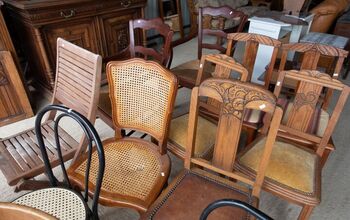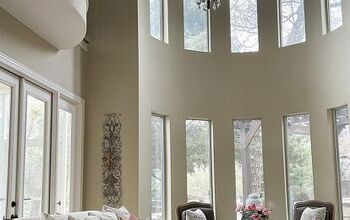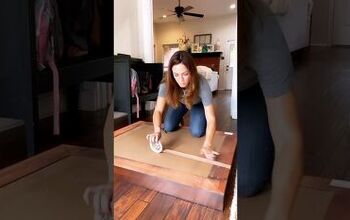How to Design Your Dream Space in 9 Simple Steps

Whether you're revamping a room or starting from scratch, these tips will help you create a space that's both functional and fabulous. This first step of the process is the foundation of your design plan. If it brings you joy, that's all that matters!
If you're new here, I'm Dia, an interior designer, stylist, and home improvement enthusiast. Today, I'm sharing a step-by-step process on how to design a room. So, if you're lost on how to begin designing your space, this video is for you!
Table of contents
1. Assess Your Needs and Space
First things first: assess the basics. Consider your home's architecture, your lifestyle, and your priorities. How do you want to use your space? What are your must-haves, and what are your nice-to-haves? This first step of the process is the foundation of your design plan.
2. Take Inventory of Your Existing Furniture
Next, look at what you already have. Assess your existing pieces to decide whether you want to keep, replace, or repurpose them. You can breathe new life and upgrade the look of older furniture by reupholstering, refinishing, or painting them.
Sometimes, you can update an older dresser by simply polishing it up and switching out the poles or knobs.
But if things simply don't fit the space, consider selling or relocating them to other rooms of your house.
Shopping your home can save you money and time when you're designing your space.
3. Create a Mood Board to Capture Your Vision
The next step requires you to be a little bit creative! Put together a mood board to gather inspiration. Look through magazines, Pinterest, or your favorite design blogs and create a mood board that captures the look and feel you're going for.
Analyze the details of the images you've collected to identify common elements like colors, style, and texture. This will help you visualize your design direction, determine the color palette and style you're going for, and guide you on your journey when you're sourcing materials and furniture.
You can opt to print the images and place them in a folder so you can carry them with you when you go shopping, or you can create a digital mood board using computer software like Canva.
This is an easy way to compile images of furniture, rugs, colors, and accessories into one visual. It allows you to fine-tune your design before committing to purchases.
Remember, you don't necessarily need to buy the exact items that are on your mood board. This is where you get to dream about your perfect space. The mood board can act as a reference tool to source similar-looking items based on your budget.
4. Plan Your Space for Functionality and Flow
Now, let's talk about space planning! Measure twice, decorate once. Consider the size and scale of your furniture pieces, and use painter's tape to visualize the layout before making any purchases.
Also, keep in mind the size and quantity of pieces you will be placing in the room to ensure optimal functionality and traffic flow through the space. It's all about finding the perfect balance.
5. Layer Lighting for Ambiance and Functionality
Next, consider a layered lighting plan. Think about the type of lighting you need and where you want to place them—because lighting matters!
Ideally, plan for a combination of three to four sources of light dispersed throughout the space.
Illuminate your space with a mix of overhead, task, and accent lighting. Multiple light sources enhance the ambiance and functionality of your space.
6. Start from the Ground Up: Rugs and Furniture
Begin with your foundational pieces. Select a rug to set the tone for the room and build your design from there. Consider the style, color, and size that will best complement your space. This will ground your furniture arrangements, so go as big as you can!
Then, focus on the other larger pieces like a sofa and accent furniture. Think about style, color, and, of course, comfort.
7. Bring Your Walls to Life with Art and Mirrors
Art and mirrors can add character and personality to a room, whether it's a statement piece or a gallery wall. Invest in one-of-a-kind art pieces or opt for budget-friendly alternatives like prints and vintage finds.
Art is very personal, so as long as you enjoy the way it looks and it goes with your color palette, it doesn't matter whether it's an original piece of art or a print from Etsy or Amazon.
If it brings you joy, that's all that matters!
8. Add Personality with Textiles and Accessories
Next, add personality with textiles and accessories. Think of throw pillows, blankets, and decorative options that reflect your style to add warmth and interest to the space.
While you're designing your room, don't forget to inject life into the space by incorporating some live or artificial greenery. Tall plants can fill awkward corners or act as a focal point.
A potted plant or vase with green stems on a table or console can add a fresh, natural look to a space.
9. The Final Touches
Designing a space is all about understanding your needs, defining your style, and being thoughtful about your choices. So here are the key takeaways:
- Assess your space and layout: Measure twice and consider size and flow.
- Define the color palette and style you want for the room.
- Source furniture and accessories that align with your color scheme and design.
- Be thoughtful and intentional with your purchases and what you want to bring into your space.
By following this process, you will be empowered and encouraged to create a space that reflects your unique personality and taste. Design is all about creating a space that reflects who you are and how you live. So take your time, trust your instincts, and enjoy the journey as you bring your vision to life.
I love reading your notes, so feel free to comment below and let me know if you have any questions.






































Comments
Join the conversation